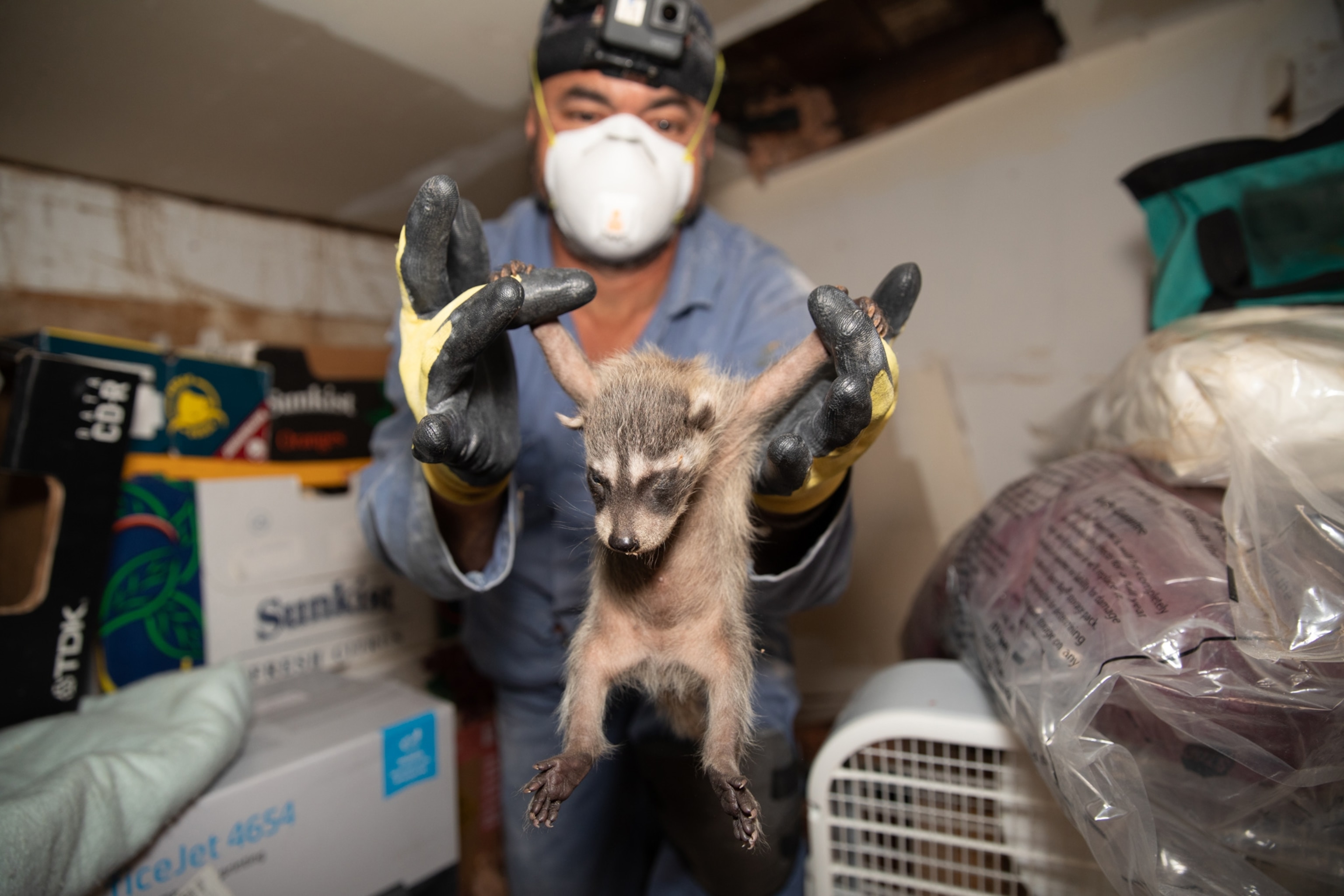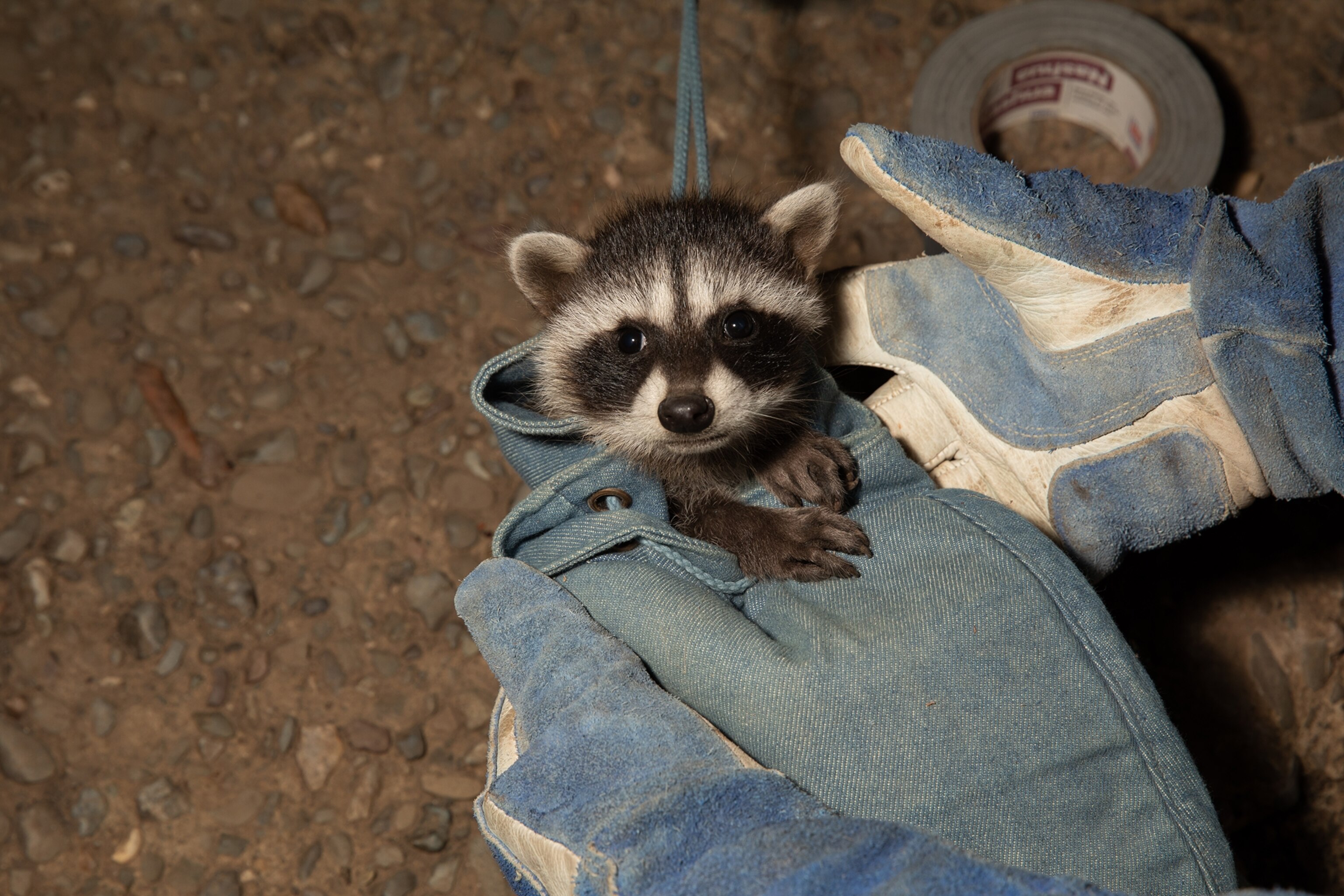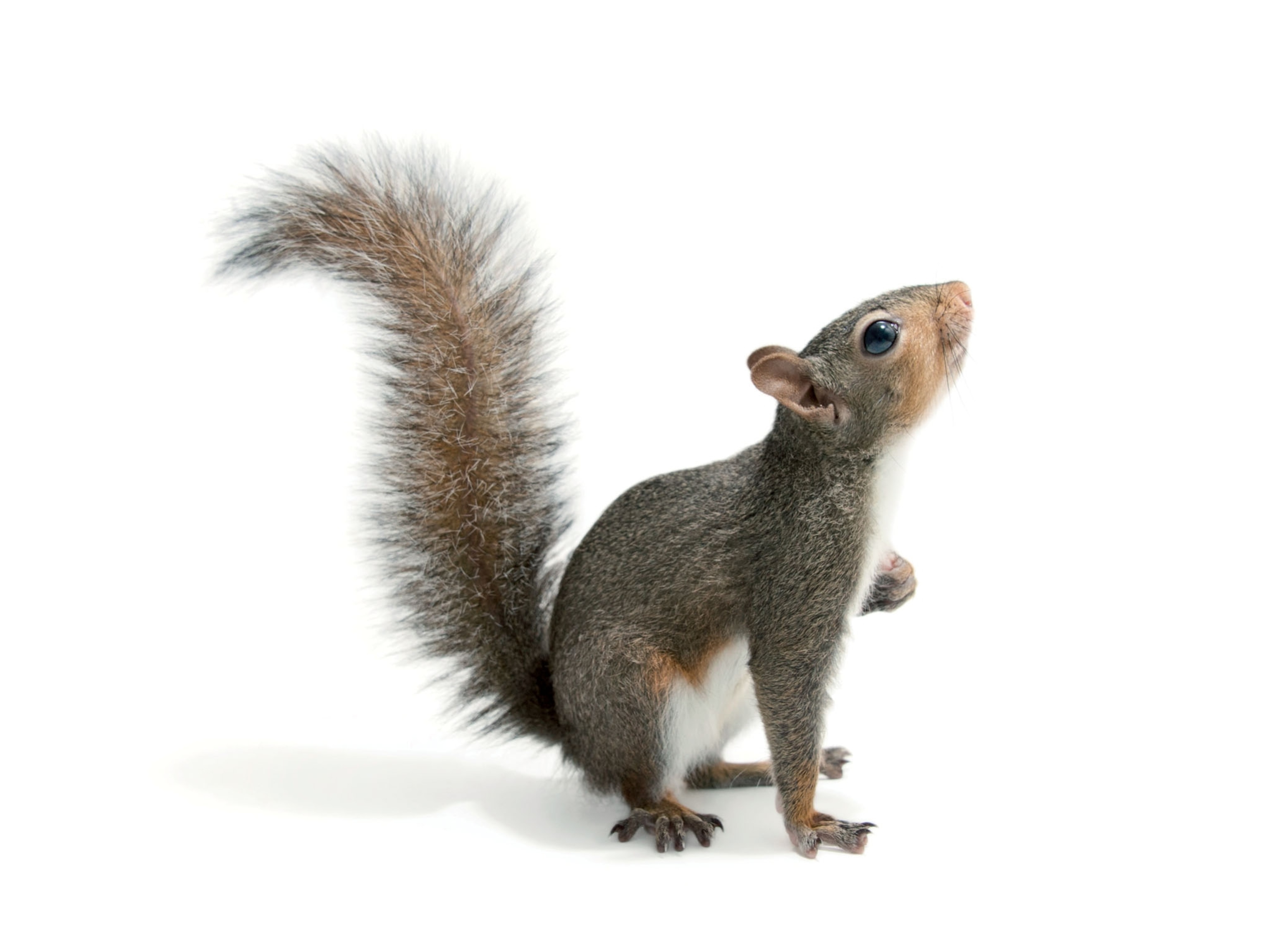
How raccoons became the ultimate urban survivors
“Trash pandas” are infamous for living among us, but why are they so good at it?
In the early 1900s, American scientists in the burgeoning field of animal psychology had a grand plan: Bring raccoons, a plentiful North American mammal known for its cleverness, into the lab for experiments on animal intelligence.
They quickly gave up when the dexterous animals with primate-like paws kept breaking out of their cages. The scientists essentially said, “We’re throwing up our hands and going back to rats and pigeons,” chuckles Sarah Benson-Amram, a behavioral ecologist at the University of British Columbia in Vancouver. That’s why, she says, “we’re now only scratching the surface of raccoon cognition.”

Found in most U.S. cities, the masked omnivores are infamous for breaking into trash cans, homes, and other human-made structures. So far, Benson-Amram’s research suggests raccoons’ smarts are contributing to the species’ expansion into suburban and urban areas throughout the North American continent. (Read how wild animals are adapting to city life in surprising ways.)
She and her colleagues have performed various experiments in which they present wild and captive raccoons with demanding tasks, such as learning to push multiple levers to receive a treat. In almost every instance, the animals have defied the team’s expectations—often by coming up with a solution that the scientists hadn’t even imagined.
“They’re endlessly fascinating—every study we do, I’m struck by their curiosity and their willingness to explore things,” Benson-Amram says.
Though raccoons are beloved pop icons to many—it’s easy to find “trash panda” merchandise online—others consider the animals nuisances, especially when they’re rummaging through the garbage.
For that reason, Benson-Amram and colleagues recently launched the University of British Columbia’s Urban Wildlife Project, in which they’ll place 30 GPS collars on raccoons and 10 collars on coyotes throughout Vancouver to study how the animals adapt to and use urban environments. The team will also deploy remote cameras throughout the city to observe the creatures and how they interact with people.
The goal, she says, is to “hopefully lead to a greater co-existence between humans and wildlife.”

For instance, they’ll eat pretty much anything, from fruit to insects to frogs to junk food.
Some raccoons will spend their entire lives in a three-block radius around a dumpster, subsisting off that one artificial food source, says Suzanne MacDonald, a psychologist at York University in Toronto and a National Geographic Explorer who studies urban raccoon cognition.
That’s a big contrast from wild raccoons, which are territorial animals with ranges between 1.5 square miles and nearly 10 miles. “If you can keep alive from one dumpster, that’s your home range. All you have to do is eat, drink, and mate,” she says.

Another boon for raccoons: As temperatures warm worldwide due to climate change, raccoons are predicted to spread even further north into the U.S. and Canada, as well as within countries where they’ve become invasive species, such as Japan and Germany.
Raccoons also have sensitive five-fingered paws for grasping and feeling things, such as slippery aquatic prey. Possibly for that reason, raccoons are especially numerous in temperate cities built around rivers, such as Toronto, Vancouver, and Chicago, MacDonald says. Those flexible paws also give them a unique edge in exploiting the human environment, whether it’s wiggling into the backseat of a car or climbing a skyscraper. “Coyotes can’t live in your attic or garage,” she says, but raccoons can.

Of course, that combination of curiosity and innovativeness can often lead to new food sources that a less timid animal would likely never discover. (Read National Geographic's series on urban wildlife, “Wild Cities.”)
In a 2017 study, Lauren Stanton, then a Ph.D. student in Benson-Amram’s lab, presented captive raccoons with the Aesop’s Fable test, a classic measure of intelligence. In the experiment, an animal must drop stones into a water-filled cylinder to raise the fluid level and make floating treats—in this case, marshmallows—rise to the surface.
Not only did two raccoons correctly drop the stones, a third changed her strategy entirely and came up with her own solution by knocking over the cylinder to get to the marshmallows—an example of the species’ ability to think outside the box.
“They demonstrated unique and flexible ways of getting the marshmallow reward out that have not been observed in other species—and that I did not anticipate myself,” says Stanton.
The making of an “urban warrior”
Though scientists agree that raccoons are naturally well suited to urban life, a thornier question is whether urban raccoons are evolving over the generations to be smarter than their rural kin. For instance, MacDonald’s research has shown that raccoons in downtown Vancouver can open a trash can secured with a bungee cord, while those in rural environments cannot.
“My hypothesis is that they’re evolving and the urban environment fits their natural characteristics,” MacDonald says. It’s like taking an animal “that’s adaptable and making it even more into an urban warrior.” (See how urban raccoons can escape trash cans.)
Benson-Amram says it’s too early to say whether raccoons are evolving through natural selection because of city life. But it’s entirely possible our attempts to deter them, such as designing raccoon-proof trash cans, are “actually creating smarter animals, because we’re presenting them with increasingly difficult problems to solve.”
For instance, MacDonald recently advised the city of Toronto on a new line of raccoon-proof trash cans. The receptacles have a lever that can be opened only with an opposable thumb, which raccoons lack. “You can’t outsmart them,” she says. “We have to do something only our hands do.”
It’s also not always true, however, that urban raccoons are cleverer than their country counterparts. In urban and rural areas around Raleigh, North Carolina, Blake Morton has set up several experiments to measure the mammal’s innovativeness.
One test involves suspending cups filled with pet food from a tree using a string. Some of the cups are easy for raccoons to pull up from a branch, while others have smoother strings and are harder to grab. Using camera-trap video, Morton observes how raccoons deal with the challenge.
“What we find is that they’re really willing to try out new things and are good problem solvers—up to a certain point,” says Morton, a comparative psychologist at the United Kingdom’s University of Hull. For instance, when tackling the more challenging puzzles, raccoons tend to give up within about 30 seconds, then leave.
“It’s surprising they don’t stay to think about it a little longer,” as primates often do when given similar puzzles, he says. It may be because the animals simply know there are other, easier-to-get food items available—possibly another example of their innovativeness and adaptability.
Even more surprising is that so far, urban and rural raccoons have shown no difference in the experiment.
“Just being in an urban setting is not a guarantee,” he says, that an animal will learn new skills.
Living with “trash pandas”
Even if they’re adapting to it, city life can be tough for raccoons. Many get hit by cars in their first year of life.
What’s more, mother raccoons, which birth between two and five kits each spring, often face the challenge of finding multiple dens in which to house their young. In suburbs and cities, this often means people’s homes.


That’s why, in recent years, a handful of wildlife-rescue providers across the U.S. have adopted a strategy in which animals such as raccoons, bats, or squirrels are extricated safely from buildings, reunited with their young (if there are any), and prevented from accessing the same building again, says John Griffin, senior director of urban wildlife programs at the Humane Society of the United States in Washington, D.C.
The Humane Society often educates communities on why it’s more ethical to take this so-called eviction-exclusion approach, instead of trapping and killing the animals.
Those involved in these efforts have seen firsthand the lengths raccoon mothers take to shelter their young, such as shimmying under roof shingles or squeezing through spaces smaller than four inches. “It kind of blows me away, the kind of things they can climb and the spaces they can access,” Griffin says. Combined with their intelligence and ability to manipulate objects, raccoons are very “adept at using the human-built environment to their advantage.” (See more photos of urban wildlife.)
A well-known advocate of the eviction-exclusion approach is Junio Costa, who owns Mr. Raccoon, a no-kill wildlife-removal service in the San Francisco Bay Area.
A typical call involves a raccoon mother denning in an attic, chimney, or crawl space. Costa, who has a background in construction, will first find the entry point through which the mother entered the building. After locating the animals, he’ll then safely remove the young and place them in a box next to the entry point. Before long, mom will return and move the babies to another den. Then, Costa will seal off the entry point to prevent the family from returning.
However, he says, many people still elect to trap and kill, which is cheaper than his services.
“Raccoons are trying to survive like everybody else,” says Costa. “We can share our space—we need to respect them.”

You May Also Like
Go Further
Animals
- How can we protect grizzlies from their biggest threat—trains?How can we protect grizzlies from their biggest threat—trains?
- This ‘saber-toothed’ salmon wasn’t quite what we thoughtThis ‘saber-toothed’ salmon wasn’t quite what we thought
- Why this rhino-zebra friendship makes perfect senseWhy this rhino-zebra friendship makes perfect sense
- When did bioluminescence evolve? It’s older than we thought.When did bioluminescence evolve? It’s older than we thought.
- Soy, skim … spider. Are any of these technically milk?Soy, skim … spider. Are any of these technically milk?
Environment
- Are the Great Lakes the key to solving America’s emissions conundrum?Are the Great Lakes the key to solving America’s emissions conundrum?
- The world’s historic sites face climate change. Can Petra lead the way?The world’s historic sites face climate change. Can Petra lead the way?
- This pristine piece of the Amazon shows nature’s resilienceThis pristine piece of the Amazon shows nature’s resilience
- Listen to 30 years of climate change transformed into haunting musicListen to 30 years of climate change transformed into haunting music
History & Culture
- Meet the original members of the tortured poets departmentMeet the original members of the tortured poets department
- Séances at the White House? Why these first ladies turned to the occultSéances at the White House? Why these first ladies turned to the occult
- Gambling is everywhere now. When is that a problem?Gambling is everywhere now. When is that a problem?
- Beauty is pain—at least it was in 17th-century SpainBeauty is pain—at least it was in 17th-century Spain
Science
- Here's how astronomers found one of the rarest phenomenons in spaceHere's how astronomers found one of the rarest phenomenons in space
- Not an extrovert or introvert? There’s a word for that.Not an extrovert or introvert? There’s a word for that.
- NASA has a plan to clean up space junk—but is going green enough?NASA has a plan to clean up space junk—but is going green enough?
- Soy, skim … spider. Are any of these technically milk?Soy, skim … spider. Are any of these technically milk?
Travel
- This tomb diver was among the first to swim beneath a pyraamidThis tomb diver was among the first to swim beneath a pyraamid
- Dina Macki on Omani cuisine and Zanzibari flavoursDina Macki on Omani cuisine and Zanzibari flavours
- How to see Mexico's Baja California beyond the beachesHow to see Mexico's Baja California beyond the beaches
- Could Mexico's Chepe Express be the ultimate slow rail adventure?Could Mexico's Chepe Express be the ultimate slow rail adventure?







